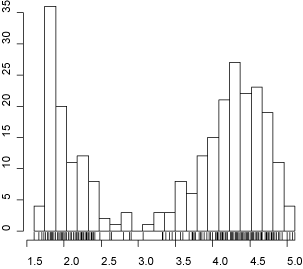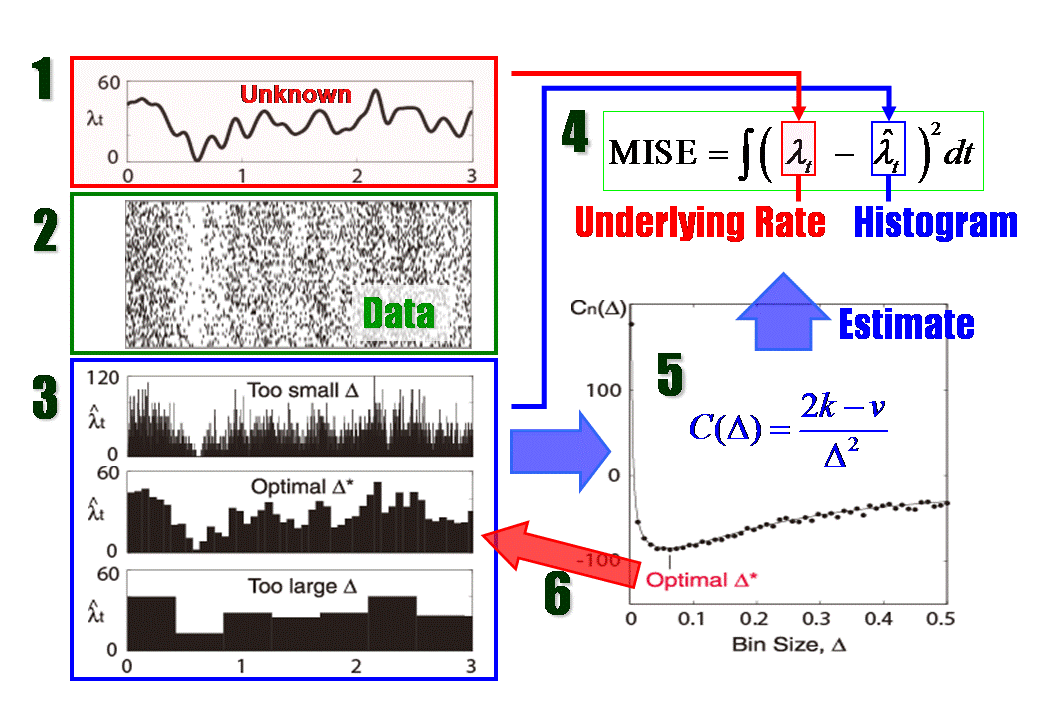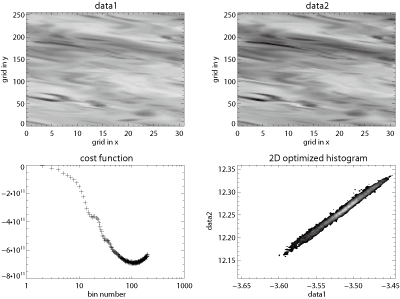|
Copy and Paste a sample program sample.nb,
then ctrl+shift. Display
code
close
\!\(<< \ Graphics`Graphics`\n
<< Statistics`DescriptiveStatistics`\[IndentingNewLine]
\(x = {4.37, 3.87, 4.00\ , 4.03, \ 3.50, \ 4.08, \ 2.25, \ 4.70, \ 1.73, \
4.93, \ 1.73, \ 4.62, \ 3.43, \ 4.25, \ 1.68, \ 3.92, \ 3.68, \
3.10, \ 4.03, \ 1.77, \ 4.08, \ 1.75, \ 3.20, \ 1.85, 4.62, \ 1.97, \
4.50, \ 3.92, \ 4.35, \ 2.33, \ 3.83\ , 1.88, \ 4.60, \ 1.80, \
4.73, \ 1.77, \ 4.57, \ 1.85, \ 3.52, \ 4.00, \ 3.70, \ 3.72, \
4.25, \ 3.58, \ 3.80, \ 3.77, \ 3.75, \ 2.50, 4.50, \ 4.10, \ 3.70, \
3.80, \ 3.43, \ 4.00, \ 2.27, \ 4.40, \ 4.05, \ 4.25, \ 3.33, \
2.00, \ 4.33, \ 2.93, \ 4.58, \ 1.90, \ 3.58, \ 3.73, \ 3.73, \
1.82, \ 4.63, \ 3.50, \ 4.00, \ 3.67, \ 1.67, \ 4.60, \ 1.67, \
4.00, \ 1.80, \ 4.42, \ 1.90\ , 4.63, \ 2.93, \ 3.50, \ 1.97, \
4.28, \ 1.83, \ 4.13, \ 1.83, \ 4.65, \ 4.20, \ 3.93, \ 4.33, \
1.83, \ 4.53, \ 2.03, \ 4.18, \ 4.43, \ 4.07, \ 4.13, \ 3.95, \
4.10, \ 2.27, \ 4.58, \ 1.90, \ 4.50, \ 1.95, \ 4.83, \
4.12};\)\[IndentingNewLine]
c = {}; Δ = {}; \ d = {}; p = {};\[IndentingNewLine]
For[i = 1,
i < 50, \(i++\), \[IndentingNewLine]n = i + 3; \[IndentingNewLine]d =
Append[d, \((Max[x] - Min[x])\)/n]; \[IndentingNewLine]ki =
BinCounts[
x, {Min[x], Max[x],
d[\([i]\)]}]; \[IndentingNewLine] (*Cost\ Function\
*) \[IndentingNewLine]k\ = \ Mean[ki]; \[IndentingNewLine]v\ = \
VarianceMLE[ki]; \[IndentingNewLine]c =
Append[c, \((2 k - v)\)/d[\([i]\)]\^2]; \[IndentingNewLine]p =
Append[p, {d[\([i]\)],
c[\([i]\)]}];\[IndentingNewLine]]\[IndentingNewLine] (*Optimal\ Bin\
\ Size\ Selection*) \[IndentingNewLine]
\(idx = \(Ordering[c]\)[\([1]\)];\)\[IndentingNewLine]
\(d\^*\) = d[\([idx]\)]\[IndentingNewLine]
\(edges = {};\)\[IndentingNewLine]
\(edges =
Do[Append[edges, Min[x] + \(d\^*\)*i], {i, 0,
idx + 3}];\)\[IndentingNewLine] (*Display\ an\ Optimized\ Histogram\
*) \[IndentingNewLine]
\(Histogram[x, \ HistogramRange -> {Min[x], Max[x]},
HistogramCategories -> edges];\)\[IndentingNewLine]
\(ListPlot[p];\)\)
|
 and
and 



















